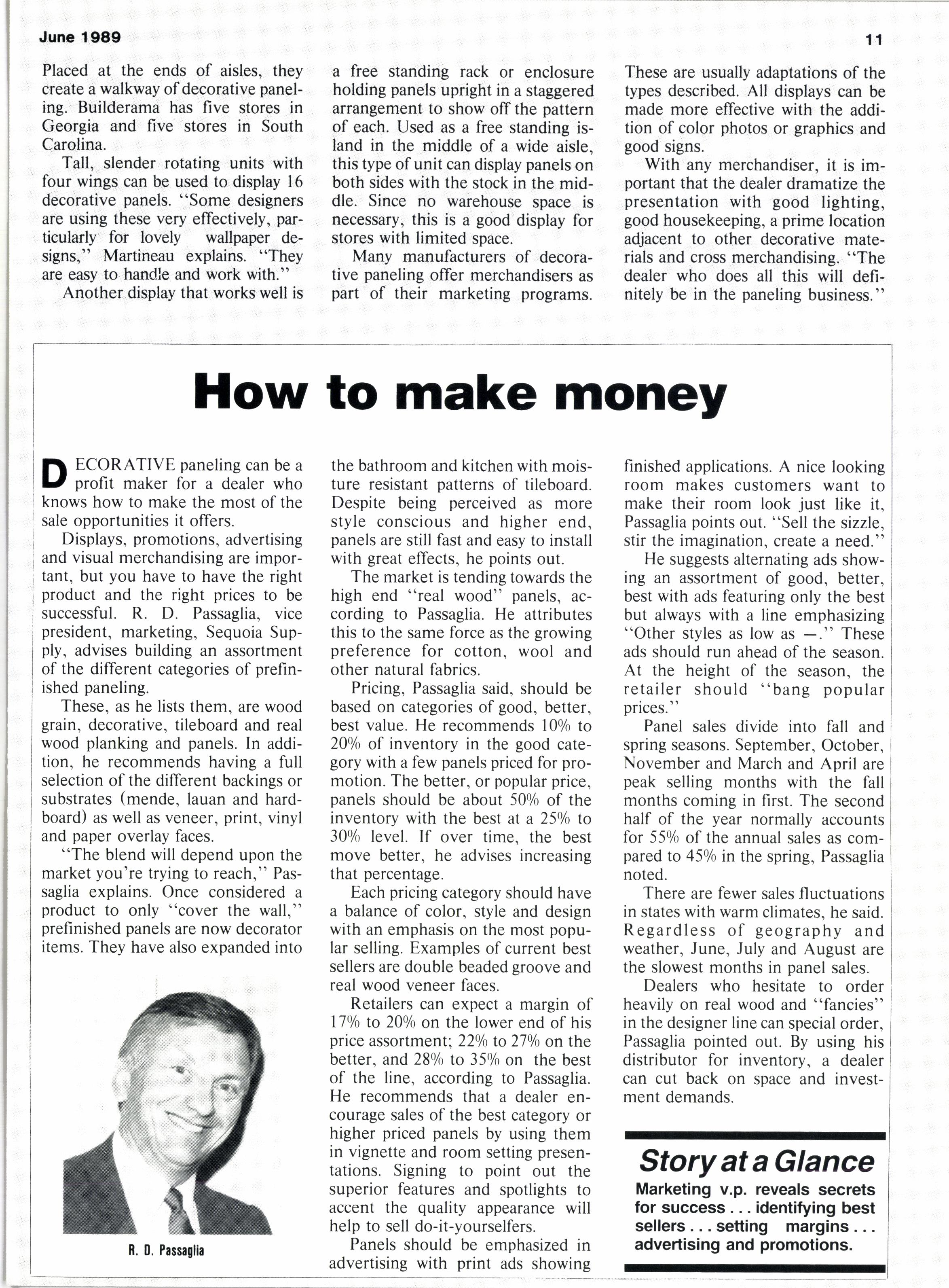
2 minute read
How to make money
I\ECORATIVE paneling can be a l/ profit maker for a dealer who knows how to make the most of the sale opportunities it offers.
Displays, promotions, advertising and visual merchandising are important, but you have to have the right product and the right prices to be successful. R. D. Passaglia, vice president, marketing, Sequoia Supply, advises building an assortment of the different categories of prefinished paneling.
These, as he lists them, are wood grain, decorative, tileboard and real wood planking and panels. In addition, he recommends having a full selection of the different backings or substrates (mende, lauan and hardboard) as well as veneer, print, vinyl and paper overlay faces.
"The blend will depend upon the market you're trying to reach," Passaglia explains. Once considered a product to only "cover the wall," prefinished panels are now decorator items. They have also expanded into the bathroom and kitchen with moisture resistant patterns of tileboard. Despite being perceived as more style conscious and higher end, panels are still fast and easy to install with great effects, he points out.
The market is tending towards the high end "real wood" panels, according to Passaglia. He attributes this to the same force as the growing preference for cotton, wool and other natural fabrics.
Pricing, Passaglia said, should be based on categories of good, better, best value. He recommends 10% to 200/o of inventory in the good category with a few panels priced for promotion. The better, or popular price, panels should be about 50% of the inventory with the best at a 250/o to 300/o level. If over time, the best move better, he advises increasing that percentage.
Each pricing category should have a balance of color, style and design with an emphasis on the most popular selling. Examples of current best sellers are double beaded groove and real wood veneer faces.
Retailers can expect a margin of l7o/o to 200/o on the lower end of his price assortment; 220/o to 270/o on the better, and 280/o to 350/o on the best of the line, according to Passaglia. He recommends that a dealer encourage sales of the best category or higher priced panels by using them in vignette and room setting presentations. Signing to point out the superior features and spotlights to accent the quality appearance will help to sell do-it-yourselfers.
Panels should be emphasized in advertising with print ads showing finished applications. A nice looking room makes customers want to make their room look just like it, Passaglia points out. "Sell the sizzle, stir the imagination, create a need."
He suggests alternating ads showing an assortment of good, better, best with ads featuring only the best but always with a line emphasizing "Other styles as low as -." These ads should run ahead of the season. At the height of the season, the retailer should "bang popular prices. "
Panel sales divide into fall and spring seasons. September, October, November and March and April are peak selling months with the fall months coming in first. The second half of the year normally accounts for 550/o of the annual sales as compared to 450/o in the spring, Passaglia noted.
There are fewer sales fluctuations in states with warm climates, he said. Regardless of geography and weather, June, July and August are the slowest months in panel sales.
Dealers who hesitate to order heavily on real wood and "fancies" in the designer line can special order, Passaglia pointed out. By using his distributor for inventory, a dealer can cut back on space and investment demands.
Story at a Glance
Marketing v.p. reveals secrets for success. .. identifying best sellers. . setting margins. advertising and promotions.










